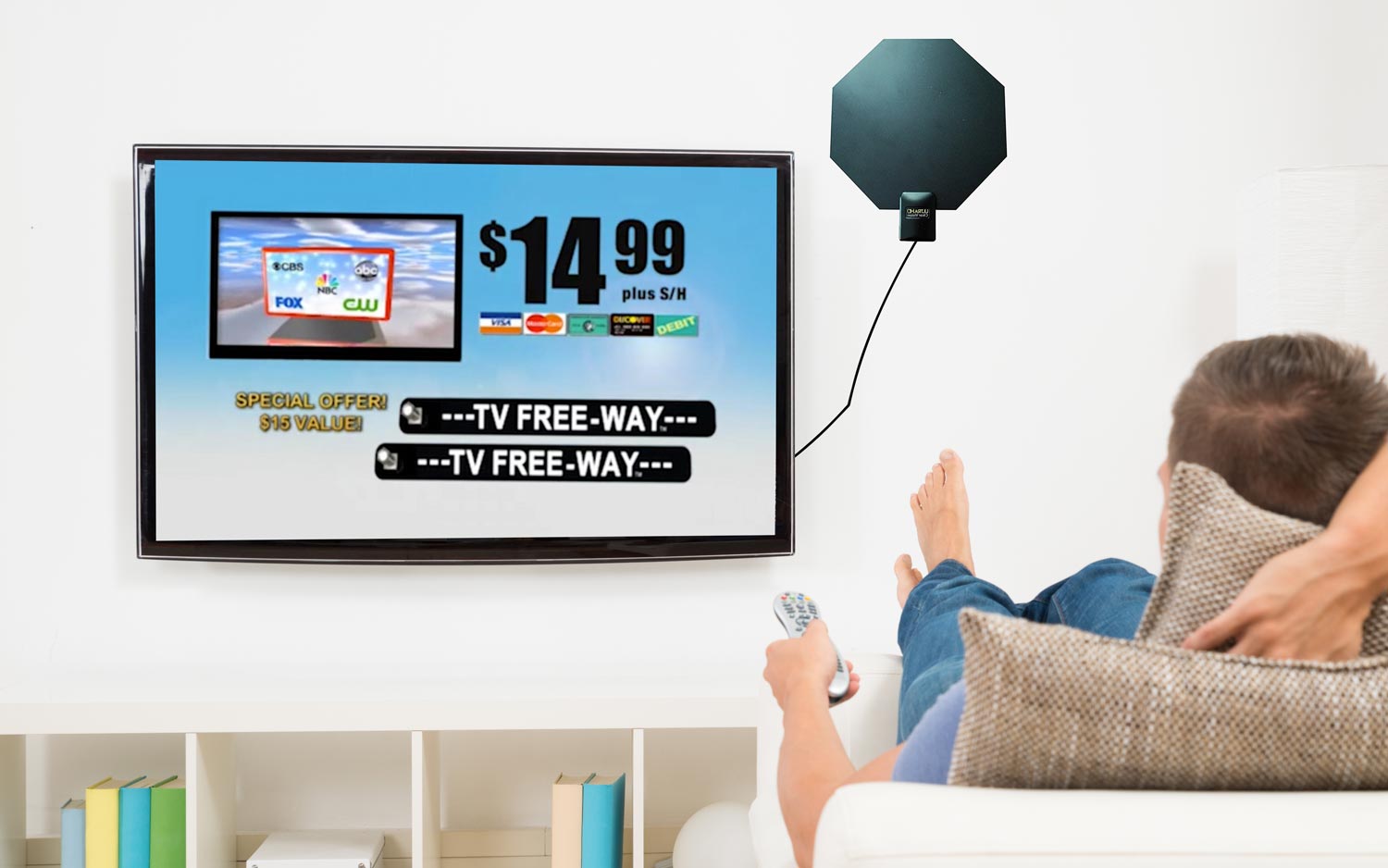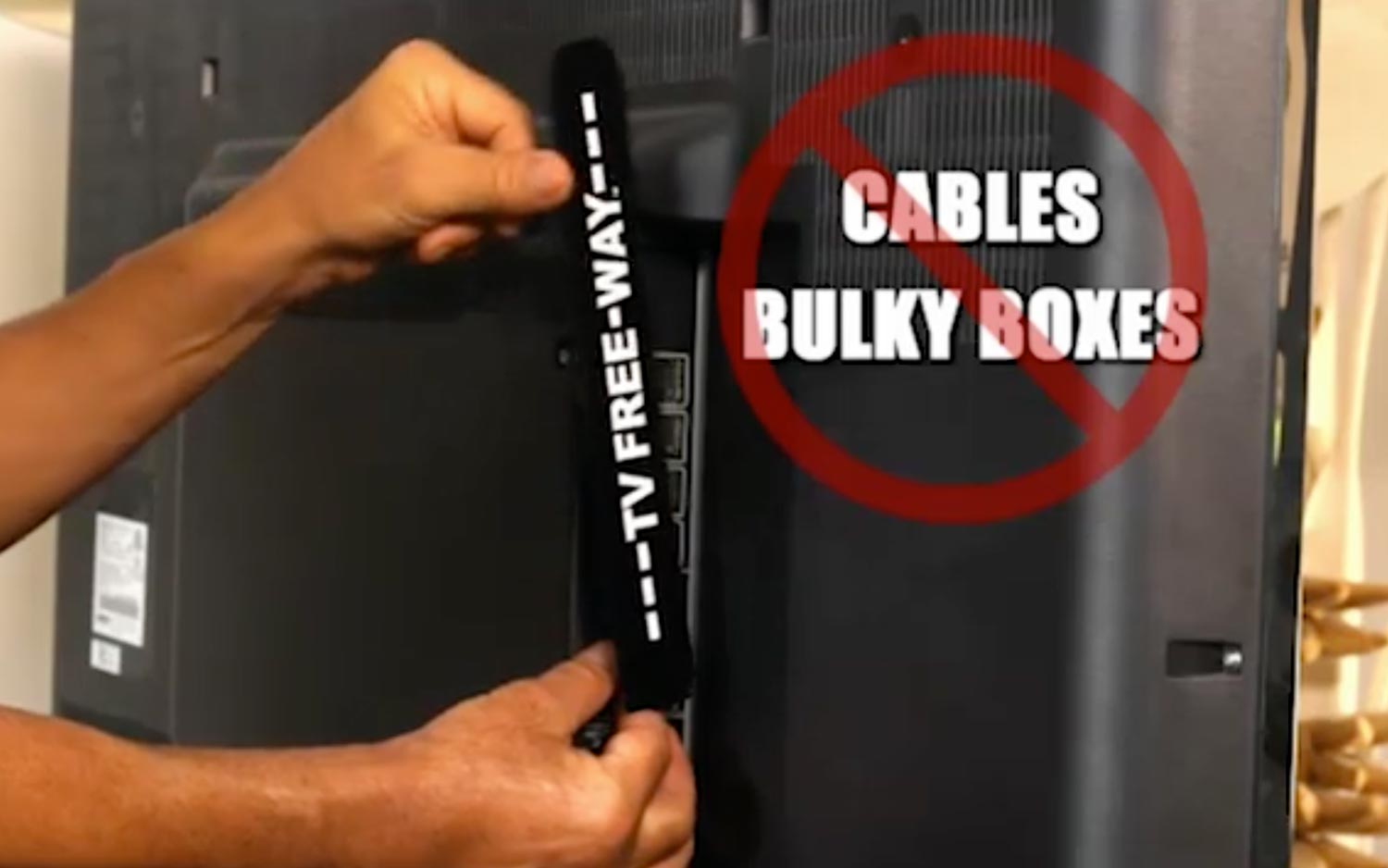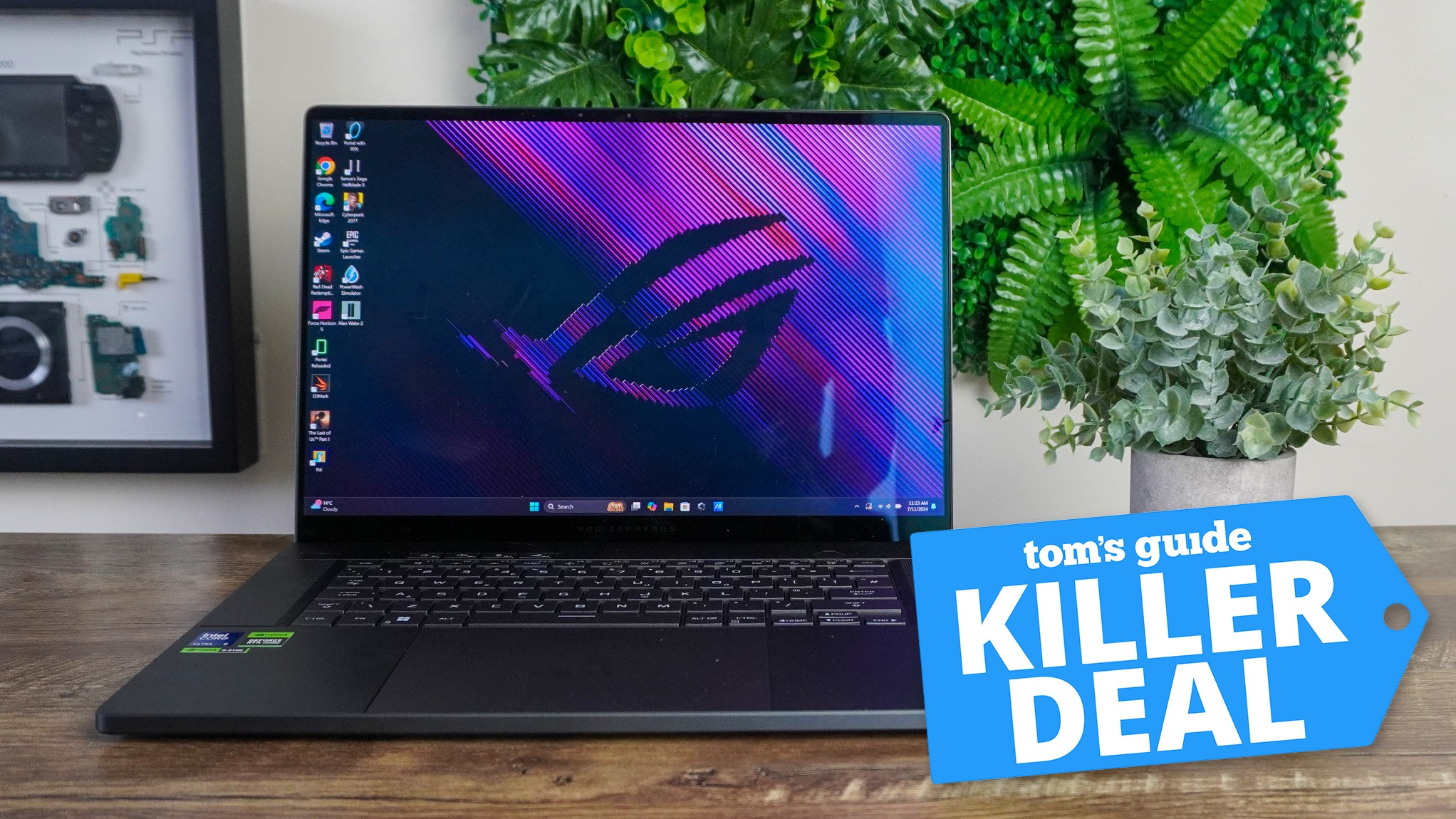Every ‘As Seen on TV’ Antenna We Tested Is Bad (or Overpriced)
We took three aggressively advertised antennas and put them to the test to see which one (if any) is worth the money.
Hawking new inventions and gadgets on TV is a time-honored if little-respected tradition. Consumer electronics are no exception, with even basic HD-TV antennas touted as money-saving miracle cures for those looking to cast off the yoke of high bills for cable and satellite TV. So we decided to test out several as-seen-on-TV devices to see how they compare to our Editors' Choice antennas.

We purchased three, less-than-$20 models: the Magic Stick TV, the TV Free-Way and the Ultra HD Clear Vision. We tested each of these unamplified models with our standard Samsung KS9000 Ultra HD 4K TV in New York City in the same location we use to test all of our antennas. Here's what we found out:
| Row 0 - Cell 0 | Magic Stick TV | TV Free-Way | Ultra HD Clear Vision |
| Price | $19.95 | $19.99 | $14.98 |
| Channels Received | 21 | 17 | 11 |
| Range | Not Rated | Not Rated | 20 to 60 miles |
| 1080p reception | Yes | Yes | Yes |
| Cable length | 20 feet | 8.2 feet | 6.3 feet |
| Amplified | No | No | No |
| Size | 9.1 x 1.2 inches | 10.5 x 1.25 inches | 7.75 x 7.75 inches |
Magic Stick TV
The Magic Stick is simply a 9-inch piece of PVC plastic pipe with an antenna stuck inside. It comes with a 20-foot roll of coaxial cable for connecting to your TV. So, there's nothing hiding up its sleeve, but the Magic Stick's basic components are sensitive enough to receive more than a score of stations, making it not a leading but a fair competitor in the under-$20 crowd.
The $19.95 antenna is billed as being ready for outdoors, but we wouldn't recommend it unless you're willing to find a waterproof seal for the coaxial connection. The 20-foot cable does offer a lot of placement options, so you should be able to find the optimum position for achieving the best TV reception indoors. We tested the antenna (which is a little over an inch in diameter) in upright and lying-flat positions, neither of which adversely affected its performance.
MORE: Best Indoor HDTV Antennas
Our first station-scans with the Magic Stick antenna turned in 31 channels. However, as we viewed each station in turn, we found that only 21 could be tuned in with any consistency. Those stations included NBC and Fox, but we were disappointed that the popular ABC affiliate (which can be tricky to tune in) and the PBS channels in our area (which are usually easy to tune in) could not be viewed without significant picture distortion and dropouts.
Quick Take: Meh. It's not the prettiest accoutrement for your TV, but the Magic Stick was the best of the three models in this roundup. Still, it's not as sensitive as other available antennas that sell for the same price.
TV Free-Way (aka, As Seen on TV Digital HD Antenna)
Sometimes, buyers need to beware of recommendations from manufacturers. The TV Free-Way provides a prime example.
The TV Free-Way has an unusual blade design that comprises three flat, circuit-board-like arms, two of which swing out and can be positioned to a form T or Y shape to improve reception.
Sold by Telebrands — a K-tel-style company that features a welter of odd gadgets — the $13.96 Free-Way includes a plastic stand that works well enough for tabletop placement. But the company suggests that the antenna can also be hung off the back of your TV — and that we don't recommend.
In our standard testing position, several scanning tests indicated that the antenna had captured 27 stations. But after viewing all those listed, we found that only 17 were clear and consistent enough for TV viewing. The received stations included NBC, ABC and several retro channels featuring reruns. Both local PBS stations also looked crisp and sharp, as they do with more-expensive antennas.

As per the box instructions, we decided to also test the TV Free-Way in the suggested spot behind the TV. The results were not auspicious. When the antenna was hidden behind our Samsung test TV, the Free-Way antenna pulled in a meager six stations. Suffice it to say, we recommend keeping the antenna out in the open for the best results.
Quick Take: Look elsewhere. But if you do buy it, don't follow the instructions and hide this antenna behind your set. You'll be disappointed with the results.
Ultra HD Clear Vision TV Antenna
The packaging and promotional materials for the Ultra HD Clear Vision antenna promise a lot. The name of the product itself implies that it can receive 4K broadcasts, and on Amazon, the $17.44 antenna is listed as having a 60-mile range. Neither claim could be further from the truth.
The Ultra HD indoor antenna was one of the worst-performing antennas we've ever tested, and like all other digital antennas, it can receive only available HD 1080i or 720p broadcasts. Furthermore, most of the cost of this antenna seems to have gone into the glossy packaging rather than the product itself.
With some of the flimsiest construction we've seen, the 7.75 x 7.75-inch, flat, hexagonal antenna uses a thin, attached wire rather than a fully shielded coaxial cable to hook up to a TV. It is also one of the shortest cables we've seen on an antenna. The box says it's 10 feet long, but we measured it at a little over 6 feet, which means your placement options to tune in stations will be limited.
MORE: 10 Cheap TV Antennas (Under $20) Ranked Best to Worst
An initial scan of available channels with the Ultra HD antenna produced a list of 22 stations, the fewest of the three tested here. The accompanying owner's manual vaguely suggests that the antenna has a reception range of 20 to 30 miles; however, after spending time auditioning each of the channels, we found that only 11 were watchable. The antenna was able to receive the local NBC and ABC affiliates, for example, but it failed to pull in the Fox and CBS stations that other antennas rarely have trouble with.
Quick Take: Avoid this antenna. Despite the Ultra HD moniker, this antenna is a standard-HD model whose inferior receptivity will disappoint even those who live near several broadcast stations.
Bottom Line
Ultimately, the three antennas ballyhooed in broadcasts turned out to be less of a bargain than advertised. By comparison, many other available antennas we've reviewed perform much better and still cost less than $20. The AmazonBasics Ultra Thin and the Mohu Leaf Metro both tuned in 31 stations in our tests.
Those results are far and away superior to the three as-seen-on-TV models, and the better-performing antennas sell for approximately the same amount of money. That should make your buying decision all the more straightforward.
Credit: Tom's Guide/Shutterstock/Telebrands
Sign up to get the BEST of Tom's Guide direct to your inbox.
Get instant access to breaking news, the hottest reviews, great deals and helpful tips.
John R. Quain has been reviewing and testing video and audio equipment for more than 20 years. For Tom's Guide, he has reviewed televisions, HDTV antennas, electric bikes, electric cars, as well as other outdoor equipment. He is currently a contributor to The New York Times and the CBS News television program.

